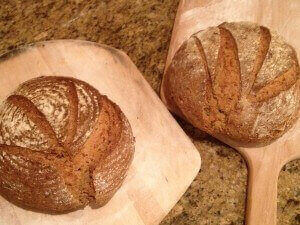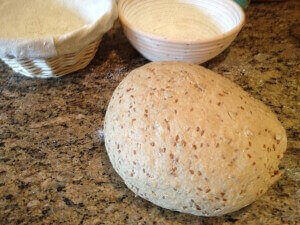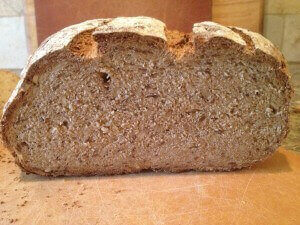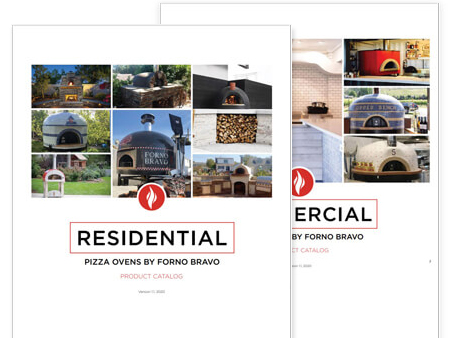Under-Proofed Multi-Seed Loaves
Aug 20, 2012Posted by Forno BravoOne of the great things about hobbies (bread baking or distance running) is that they are, well, hobbies. We strive to do our best, but let’s be honest, we aren’t exactly virtuosos at our hobbies. And that’s good. We keep at it, trying to improve, and some days are better than others. As long as we keep learning and improving, all it well. Just don’t expect perfection. haha.
With that, I made an under-proofed whole wheat multi-seed bread yesterday, that was close to being nice, but had some serious flaws. It exploded and it’s too dense. I am still trying to work whether it was under-hydrated or under-proofed. Maybe both. Either way, it didn’t spring the way I had expected, and it exploded. Although that might have been the result of a new scoring pattern.
Here is the formula:
100 gram white whole wheat
780 grams water
100 grams sunflower seeds
100 grams flax seeds
100 grams old fashion oats
40 grams molasses
30 grams olive oil
30 grams honey
10 gram yeast
20 grams salt
This is a heavy and dense dough that really made my Cuisinart mixer struggle. It took 18 minutes to just blend the flour, water and seeds; and I had to hand stretch the dough before the bulk fermentation. Blah. Now I know the limits of my mixer.
After a long (at least 3-4 hours) bulk fermentation, I shaped two boules and let them rest for perhaps an hour — though probably not long enough. But it was getting late and the oven was ready. I think you can tell from the photos that this dough is pretty heavy and pretty dense. Delicate it’s not.
My oven was mid 500F on the floor and a little hotter in the dome, but the loaves still took longer to bake than I had anticipated. The crust was getting brown, and I checked the internal temperature, thinking that it should be close, but it was still barely above 100F internally. Basically still very doughy. So I closed the door on the oven and waited it out.
The final crumb is very flavorful and it has some real character, but it is not a moist as it should be and the hole structure is very dense. Not bad, really, but it could be better.
Right now, I am leaning toward doing an exact replication of this formula in a couple of days, but with higher hydration. That will help me work out whether the biggest issue was hydration or technique. More to come.









